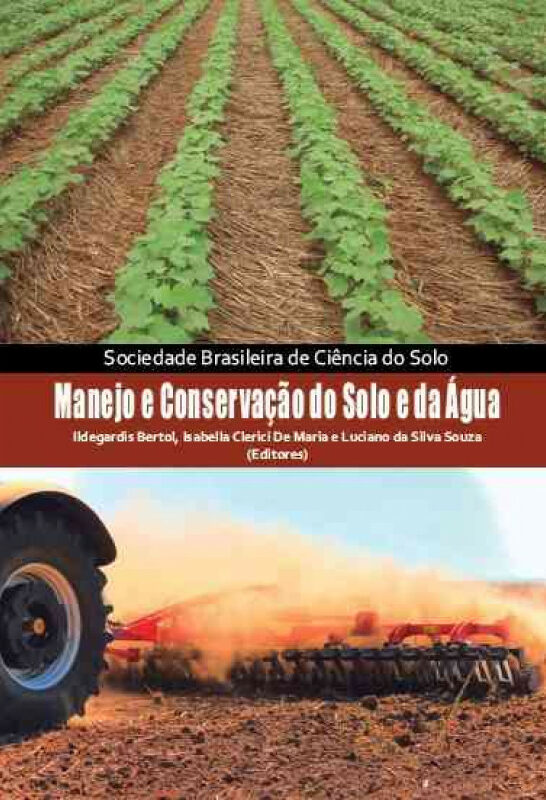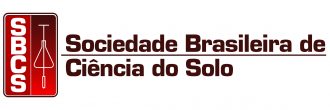
The Brazilian Soil Science Society (SBCS) began, in 2002, a major project with the publication of textbooks on various topics related to Soil Science.These books have become a reference in all Agricultural Sciences courses in Brazil, whether undergraduate or postgraduate, thanks to the topicality of the themes and depth of approach.
With the presentation of this volume, focusing on Soil and Water Management and Conservation, SBCS explains its concern for our soil under constant threat, presenting a work with a broad approach, carried out by professionals of recognized competence and committed to sustainability. Covering practically all the scenarios and connections necessary for soil and water management and conservation, this compendium will be a mandatory reference for all professionals and schools linked to Soil Science.
There are 42 topics covered by 156 highly qualified professionals who are knowledgeable about the diversity of soils and management from North to South and East to West of this immense Brazil.Only scientific societies of the size of SBCS have the strength and competence to structure a project of this scale.
Special attention is given to management, erosion control and soil and water conservation in the main Brazilian cultivation environments, as they are extensive areas, with high production and deserve a lot of attention and care.
We live in a new agricultural scenario. Brazil, which until the 1970s was a food importer, today practices intensive agriculture and is part of the world stage. Therefore, intense care must be taken with the management and conservation of soil and water.
Arthur Mangarino Torres Filho’s phrase in his graduation speech at the Escola Superior de Agricultura Luiz de Queiroz (ESALQ) in 1910: “The soil is the Fatherland, cultivating it is making it greater”, became the motto of Revista O Soil. Today we would have to adapt it to the new times: “The Soil is the Homeland, cultivating and conserving it is enhancing it and guaranteeing sustainability and life”.
When we come across a book like this, we come to mind how many professionals contributed anonymously or not to this wealth of knowledge. And the desire to list them all is great. The possibility of inadvertently leaving someone off the list, too! Therefore, we chose an agronomy luminary to represent the large cast of collaborators. Agricultural Engineer Dr. Fernando Penteado Cardoso, graduated in 1936 from ESALQ, has always been concerned with soil and water conservation, starting with his properties. While the IAC began implementing collection plots to measure land and water losses due to erosion in the early 1940s, reports from the Soil Conservation Section showed photographic records of contour cordons already deployed on their properties. This conservationist procedure was recognized with a significant tribute in 1991, on the occasion of the celebrations of the fiftieth anniversary of Soil Conservation at the São Paulo State Department of Agriculture. With the arrival of direct seeding concepts in the 1970s, it once again stood out as a leader in the dissemination of this cultivation system, which culminated in 2001 with the creation of the Agrisus Foundation, whose mission is to support projects in Sustainable Agriculture. The sustainability referred to by Dr. Fernando Penteado Cardoso is perfectly understood in one of his favorite phrases: “The soil is an asset that we borrow from our successors”.
When we were finishing these lines, we received the publication Manejo e Conservação do Solo no Agreste Pernambucano, authored by Moacyr Britto de Freitas, Eliane Nogueira Choudhury and Clementino M. B. de Faria, with a preface by Manoel Abílio de Queiroz, which I take the liberty of , partially reproduce below:
In the 1940s, a researcher began, on his own, to investigate the future of soils in the Northeast, systematically and uninterruptedly for a quarter of a century.An analysis of the research carried out by Agricultural Engineer Moacyr Britto de Freitas reveals a deep identity with the reality of regional problems.Therefore, its results are an exhortation to the new generation of technicians to offer northeastern agriculture the approach and methodology appropriate to the semi-arid tropical environment that characterizes the region. In addition to the scientific value of the publication, it represents the recognition of the Agricultural Research Center of the Semi-Arid Tropics (CPATSA) for the effort, persistence, detachment and sensitivity of that researcher who, for so long, immersed himself in investigating a problem whose The consequences, although only visible in the long term, are extremely limiting for the satisfactory development of regional agriculture.
Our compliments to SBCS and the authors for providing us with this work that is so important for the management and conservation of Brazilian soils and for the continued success of our country.
| Book | |
| Edition | 1ª Edição |




